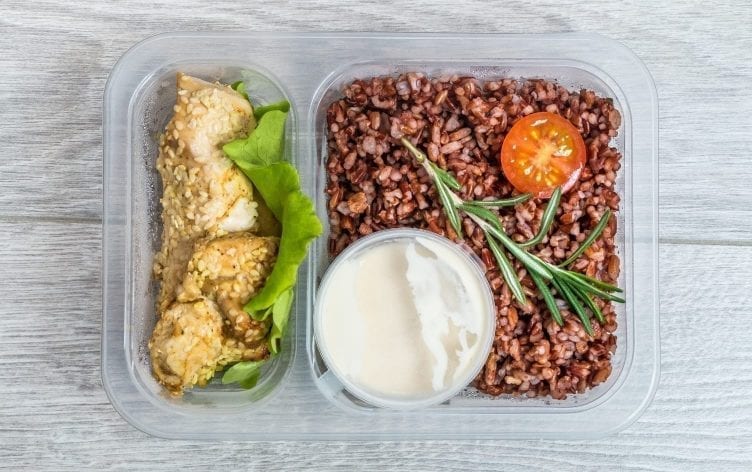
When you're attempting to lose weight, one of the biggest favors you can do for yourself is plan in advance – especially in the kitchen. Keeping track of your intake, controlling portion sizes and prepping well-balanced meals helps you create a calorie deficit and make healthy eating a routine.
Even better, \”if you're attempting to lose weight, meal prepping really simplifies things,\” says Sam Presicci, lead registered dietitian at Snap Kitchen located in Austin, Texas. \”It takes away the guesswork of what to consume on that day and knowing you have healthy food choices browsing the fridge could make the pull of unhealthy choices less strong.\”
In fact, people who meal plan have a tendency to eat more nutritious foods along with a greater number of them compared to those that don't, based on research conducted recently in the International Journal of Behavioral Nutrition and Physical Activity.
While meal prep doesn't have to be daunting, there are some things you need to bear in mind to reap the advantages. Here, experts weigh in on five common mistakes and share techniques for fixing them:
\”Accurate serving sizes are key, so make sure your container size reflects them,\” says Micah Siva, RD, chef, and founder of NutritionXKitchen. \”If your containers are extremely big, you might be tempted to fill them, and for that reason, overeat at each meal.\” Conversely, \”if they're not big enough, you may be lured to eat extra snacks, sides or meals, which could negatively change up the number of calories you take in during the day.\”
The fix: Look for containers that fit standard serving sizes. For instance, look for smaller single-ounce size containers for salad dressing or snacks like nuts. For meal-worthy salads, Siva recommends buying 30-ounce containers. You can also make portioning each element of your meal easier (and avoid wilted salads), by looking for containers that come with dividers.
It can be simple to get overwhelmed with meal prep if you are entering the supermarket with too many lists, trying to make elaborate recipes and doing too much at once.
The fix: Take advantage of supermarket shortcuts: \”Don't hesitate to buy pre-cut veggies or already-marinated meat,\” suggests Presicci. Then, opt for meals with minimal hands-on time, like recipes you can make inside a crock pot.
Another pro trick: Fill a sheet pan and batch-roast a tray of different veggies. \”Then, liven them up with different sauces like pesto or tahini as well as your favorite lean proteins,\” says Siva.
While it might be tempting to get it finished in one day, food safety rules say you're better off preparing foods a few times a week (Think: Sunday morning and Wednesday evenings, for example). Spreading meal prep time ensures you don't cook too much – and wind up overeating to save lots of food.
The fix: \”I typically suggest prepping 3 -4 days' worth of meals,\” says Siva. \”Not only do most foods keep fresh for your period of time, but it also provides you with flexibility.\” Leave room in your meal plan for leftovers, too. For instance, you can repurpose last night's dinner as omelets and tacos in the morning and sandwiches for lunch.
Another common mistake RDs see is \”prepping food that isn't balanced, meaning you're leaving out critical macronutrients,\” says Presicci.
The fix: Getting portion sizes down is key. Aim to include 4 -6 ounces of protein (i.e., a palm-sized part of chicken, fish or tempeh), 1 -2 glasses of non-starchy vegetables (i.e., two handfuls of cauliflower, broccoli or salad greens), half a cup of starchy vegetables or carbs (a fist-sized part of beans, yams or whole grains), plus 1 -2 tablespoons healthy fats (one full dinner spoon of essential olive oil or avocado oil), says Siva. \”Stick to this template, and you will ensure that you stay full and see results.\”
\”Meal planning isn't just about lunch or dinner. It should likewise incorporate preparing snacks to help keep you fueled,\” says Siva. \”Healthy snacks can sort out weight reduction by managing your hunger levels and reducing the chance of overeating at the next meal.\”
The fix: \”Opt for snacks which contain protein and fiber, which will help satiate and stabilize blood sugar levels (key to keep your time up and avoiding work candy jar),\” explains Siva. Some good choices include hummus and veggies, apple slices with peanut butter or crackers and cheese. But stay with snack-sized portions – a good rule is to pass your thumb size: 2 -3 for hummus, 2 for cheese and 1 for peanut butter, says Siva.

